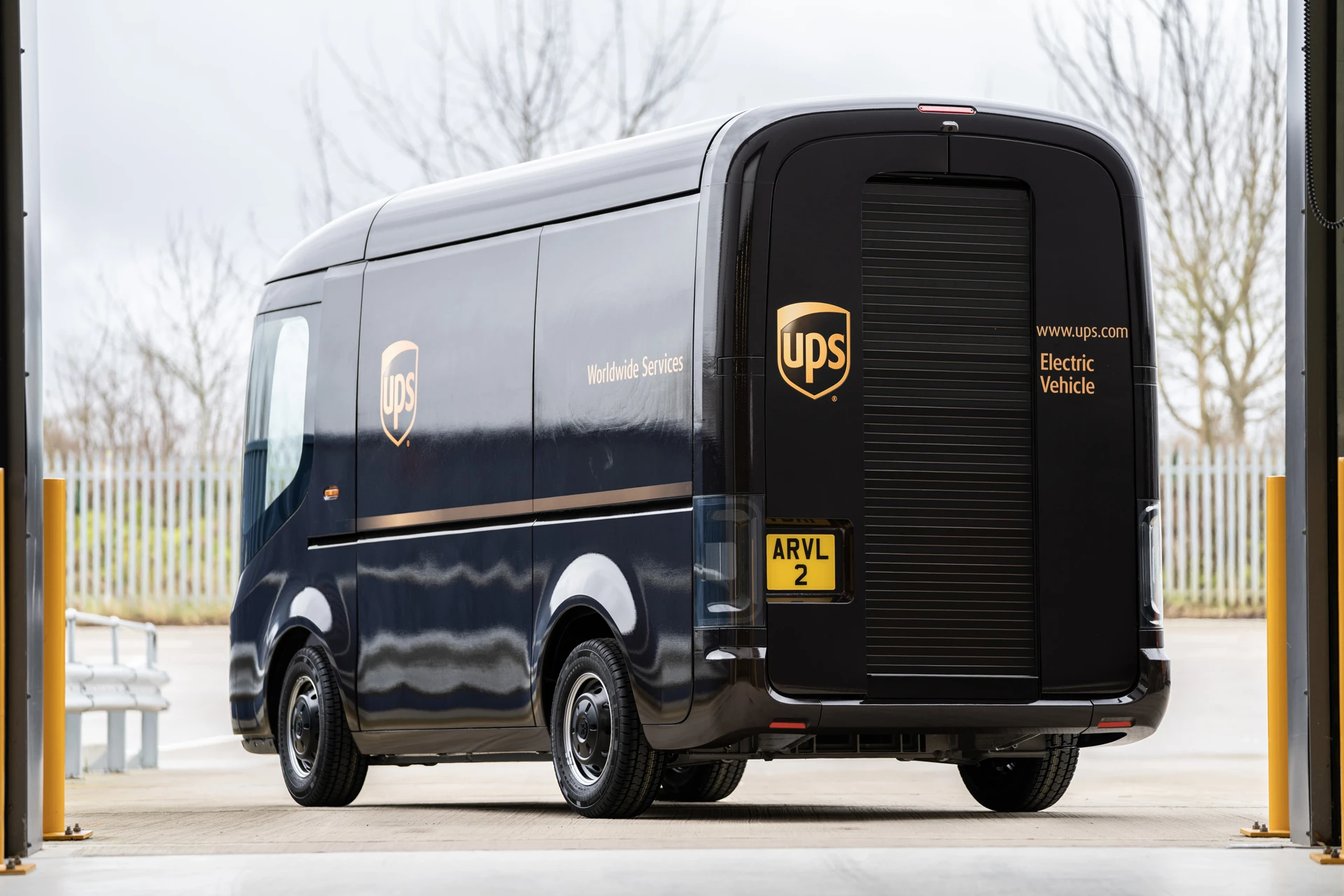By the end of the decade, online shopping is expected to grow so much that emissions from delivery trucks could grow by nearly a third. But electric delivery vehicles are at a tipping point: The technology is now cheap enough that EVs can truly compete with gas and diesel trucks and vans. To help push them over that tipping point, UPS just announced that it plans to order 10,000 electric vans from Arrival, a U.K. startup that builds electric vehicles from scratch.
“It’s taken a long time to get to this place,” says Scott Phillippi, the senior director for fleet maintenance and engineering for UPS’s international operations. “If you weren’t in the industry or on the inside, you’d think that [electric vehicles] were plentiful and available and affordable. And that really hasn’t been the case.”
The logistics company first began working with Arrival in 2016; today, UPS announced that its venture arm, UPS Ventures, also made a minority investment in the startup. (Earlier this month, Arrival raised $111.5 million from Hyundai and Kia.) The startup builds its own core components, with a modular design that uses a standard “skateboard” base that can be topped with different cabins. Arrival’s CEO has said that its vehicles will be cheaper than diesel vehicles from competitors. UPS won’t comment on the purchase price, but simply says that Arrival is price competitive with UPS’s current vehicles.

In part, electric vehicles are dropping in cost because of the battery market. The average cost for a battery pack in 2010 was $1,100 per kilowatt-hour. By 2019, that had fallen to $156, a seven-fold reduction. Batteries are also more powerful now. Arrival’s simple design and its manufacturing system—in minimalist “microfactories”—also keeps costs low. Because electric vehicles require less maintenance and because Arrival’s modular system makes parts cheaper, the total cost of ownership will be lower than for a traditional vehicle.
UPS has tested a prototype of an earlier Arrival vehicle and will begin rolling out more in cities such as London, where it has installed new charging infrastructure to handle a growing fleet of EVs. While it’s not the only alternative vehicle the company uses—it tests everything from electric cargo bikes to vehicles that run on biomethane, a fuel made from trash—the new commitment to buy 10,000 vehicles will make up a significant portion of its fleet. The company has roughly 100,000 delivery vehicles globally, and around 85,000 in the U.S., where many of the new EVs will be deployed. UPS will get the first prototypes later this year, small production numbers next year, and more significant numbers—at least 2,000 vehicles a year—starting in 2022.
The modern vehicles also have other advantages, Phillippi says, including sensors that can improve vehicle safety and eventually allow the company to begin to test automated driving on its own property. “This design allows us not to have to compromise on a clean, sustainable vehicle,” he says. “It gives us the right vehicle in the most efficient platform and as a positive byproduct is a zero-emission tailpipe.”
Recognize your brand’s excellence by applying to this year’s Brands That Matter Awards before the early-rate deadline, May 3.
